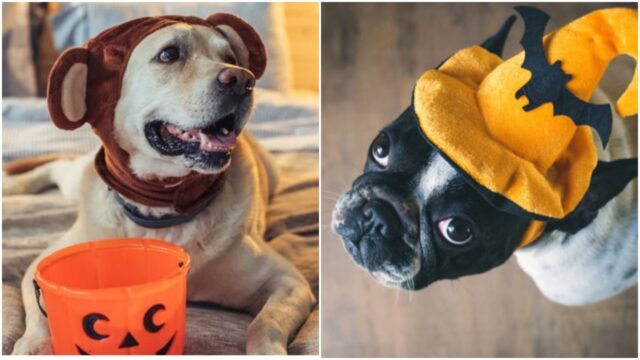Halloween is fast approaching and while it is set to be a fun-filled occasion for many people, it can also be a difficult time for our furry friends.
Yet with a little advance preparation, there are a variety of ways we can help our four-legged family members get through the evening as safely and stress-free as possible.
Laois veterinary surgeon Vivienne Phelan has provided us with some useful tips to help keep your pets safe.
Noises from fireworks, bangers and bonfire gatherings can be scary for pets to deal with.
The home environment, which is normally a place of safety, can transform to somewhere barely recognizable for pets with decorations, costumes and visitors.
It’s a good idea to choose an area of the house which can function as a safe den where your pet can retreat and feel safe.
Including their usual bedding and toys with familiar scents can help pets feel more settled. Some pets find calming background music or television comforting.
There is an increased risk of pets going missing at this time of year, it is best therefore to keep dogs, cats and small furries, such as rabbits and guinea pigs, indoors and be aware they may be spooked by visitors and try to escape!
It is vital to ensure ID tags are attached to collars and that microchip details are up-to-date. These measures help ensure they are quickly reunited if necessary.
Halloween night walks should be avoided in place of longer walks early in the day, always keep dogs on their lead if taking them outside to relieve themselves.
Some signs of stressed-out pets include shaking, pacing, barking, panting, growling or aggression.
Cats in particularly can develop urinary issues related to stress. There are a few products available to help pets relax.
Some contain milk proteins which can have a calming effect on cats and dogs. Others contain pheromones which are chemical messengers that mimic those naturally released by animals and can help pets feel relaxed.
It’s also increasingly common to use veterinary prescription medications for pets to help them deal with Halloween; these are best discussed with your local vet who can help develop a plan to help your pet cope.
Many of the sweets and treats in the home for Halloween can be harmful to pets and one of the most common emergency calls small animal vets receive is in relation to dogs eating things they shouldn’t!
Chocolate, one of the better-known offenders, contains the chemical theobromine which can be toxic to dogs and can even cause seizures.
Sugar-free sweets and jellies can be hazardous as they may contain xylitol which can life-threatening low blood sugar in pets in a short period of time.
Barmbrack, associated with this time of year, should also be avoided as dried fruit can be harmful and lead to kidney issues.
Raw pumpkin can cause digestive upset also, so if providing a treat sure it is dog or cat friendly! Macademia nuts are also toxic and should be avoided.
Finally costumes and decorations can cause problems particularly if there are small parts which could come loose.
Never force your pet to get involved in Halloween and only put costumes on them if they are very comfortable with them.
Unfortunately curious cats and dogs, especially younger puppies, can swallow items they shouldn’t, and these cases can sometimes require surgery to treat.
Exercise caution with candles as these can present a fire hazard or can lead to your cat getting their whiskers singed.
If a pet is suspected to have consumed something they shouldn’t have, it is important to contact your local vet immediately as often cases can be managed more effectively sooner rather than later!
SEE ALSO – Up and Coming: Meet the aspiring architect behind Bunlacken Brú at the foot of Cullohill Mountain

























